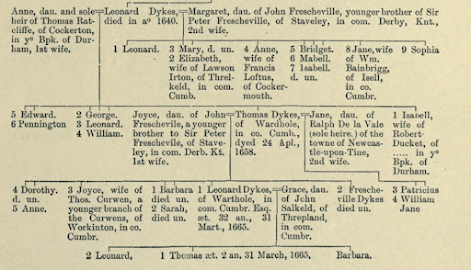It's been some time since I updated the site with new information, so I'm going to re-visit the wikitree pages relating to the Dykes family, and endeavour to put some new research information onto these pages.
I recently learned something new about the button which is illustrated on the right of the page. This is a "livery" button which would have been worn by a member of the staff working for the family. These were made by a number of companies in the UK - by the thousand - up until the First World War. When the war ended in 1914, many families of the "landed gentry" were unable to maintain the staffing levels to run their homes as they were pre-WW1 as lot's of the workers left "domestic service" to work in the factories and towns and cities. The financial cash of 1926, and the resulting Great Depression didn't help matters either, and many of the button companies - and other associated suppliers of uniforms and regalia - went bust.
However, one button company still exists: Firmin & Sons Ltd (Link) of Birmingham, who I "found" after they were the subject of a documentary on BBC tv regarding the recent coronation of Charles III. Firmin & Sons - along with Kashket & Partners - produced nearly all the uniforms and regalia used in the recent Coronation.
I have been in contact with Firmin & Sons and made enquiries about the button, and obtaining copies. they have advised that they could manufacture a replica, but that they would need to produce a stamping dye and there would be a minimum production number and, as such, a minimum charge. The intention is to have the motto around the circumference of the button (as in the photo) but only have a vertical lobster crest, as the "griffin with sword" is the crest of the Ballantine (as in scotch whisky) family. Out of interest, if you like whisky, take a look at a Ballantine's Whisky bottle, and there on the front above the name you will see their coat of arms, with the crest of "griffin with sword".
The minimum number of buttons is 200, and I clearly don't need 200 buttons. I would be willing to arrange an order of the buttons, and split up into smaller lots, if there was enough support amongst readers of the blog to share the cost. There's a number of ways they could be used: mounted in a picture frame; cast into a paper-weight; or used to replace the top button on a favourite jacket - that would make a great talking point when meeting friends and other family members, and it's something that I'm intending on doing as well as gifting a button for use on the jackets of my 3 sons.
If you are interested: send me an email at idykes@btinternet.com with an indication of how many you might want.
An indication of the cost per button - not including post and packing - is £4 (approx. US$5) each.




